In The Good Dinosaur, Pixar go prehistoric. For their sixteenth film – out this week – the animation powerhouse pits a cuddly but cowardly Apatosaurus named Arlo alongside a feral dog-child named Spot. Together, they embark on a dazzling journey through gorgeously-rendered landscapes, encountering eccentric and magnificent beasts along the way; some friendly, some less so.
With the help of concept art and storyboards (including some exclusive, never-seen-before images), we chatted to director Pete Sohn and producer Denise Ream about how they turned a hand-drawn concept into a computer-generated reality.
Finding Arlo

Pete Sohn, Director: With Arlo, the creative process for us was all about trying to find his youthful side. His fearful side. Arlo started off as a much older character, and when we restarted, we really wanted to find the boy inside. [The film started again from scracth after its original director, Bob Peterson, left the project in 2013 for story reasons.] This was a very early drawing of him, drawn by our art director Matt Nolte.
Arlo and Spot get cosy
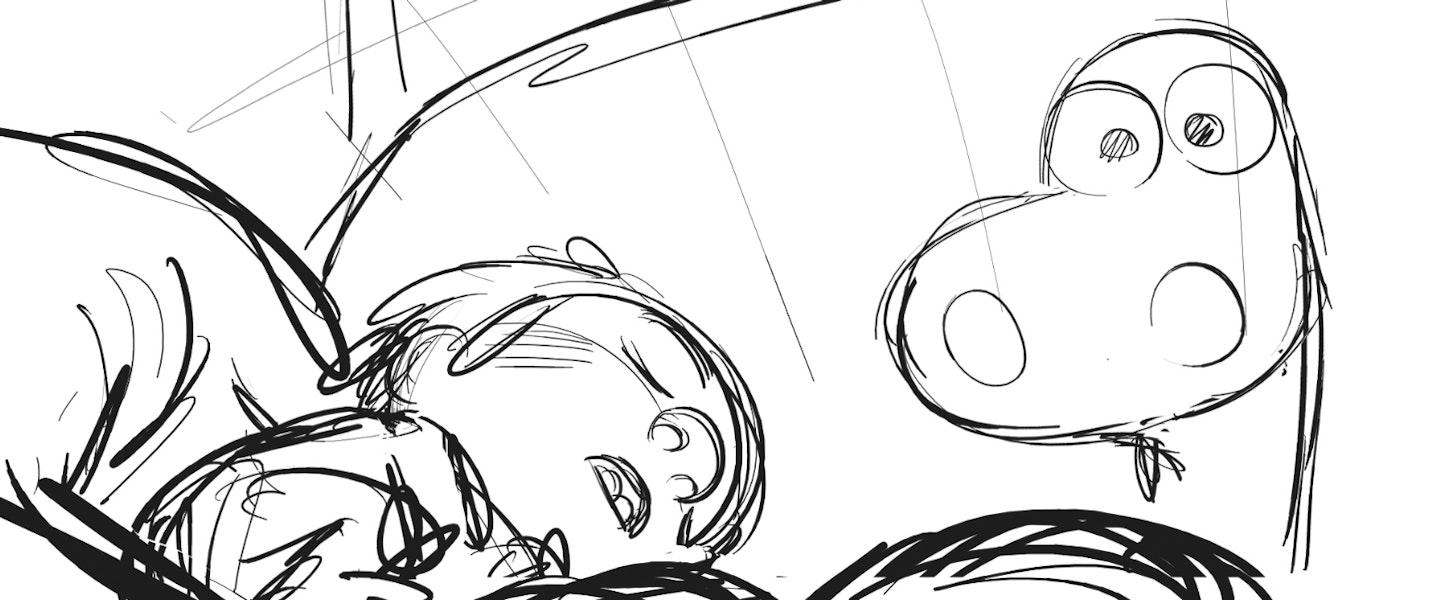
PS: This was a very early storyboard. This is a moment in the film where Arlo finds Spot sleeping in his arms for the first time, and they would just make a connection. We always thought it was a charming idea. He’s sleeping, and also dreaming a little.
Howling at the moon
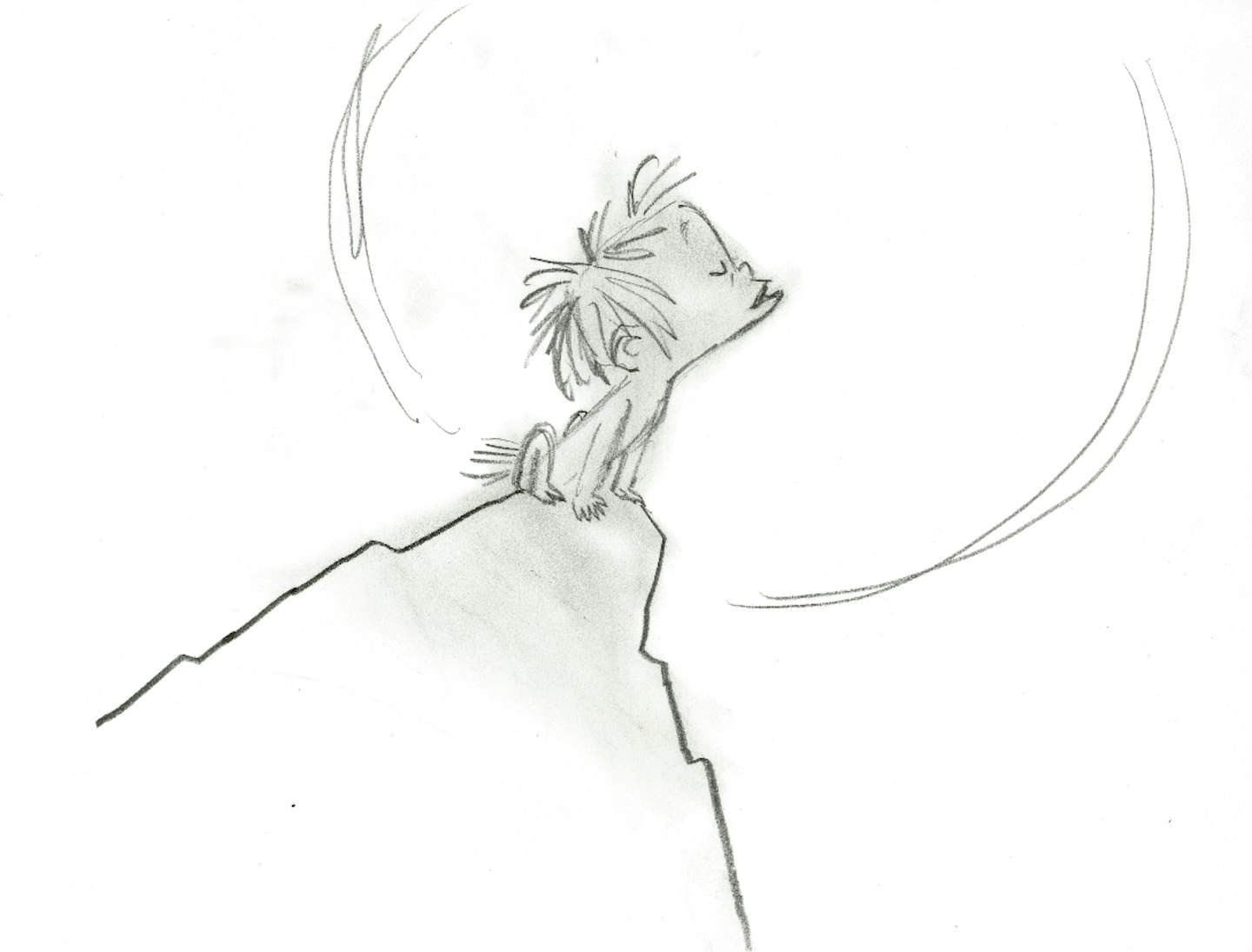
PS: This is a very clear one. Here, we’re trying to find the canine qualities in Spot: the animal, living out on his own. There’s a kind of mourning quality to it, too. He’s howling for his loved ones. It’s a really early concept drawing, again from Matt Nolte.
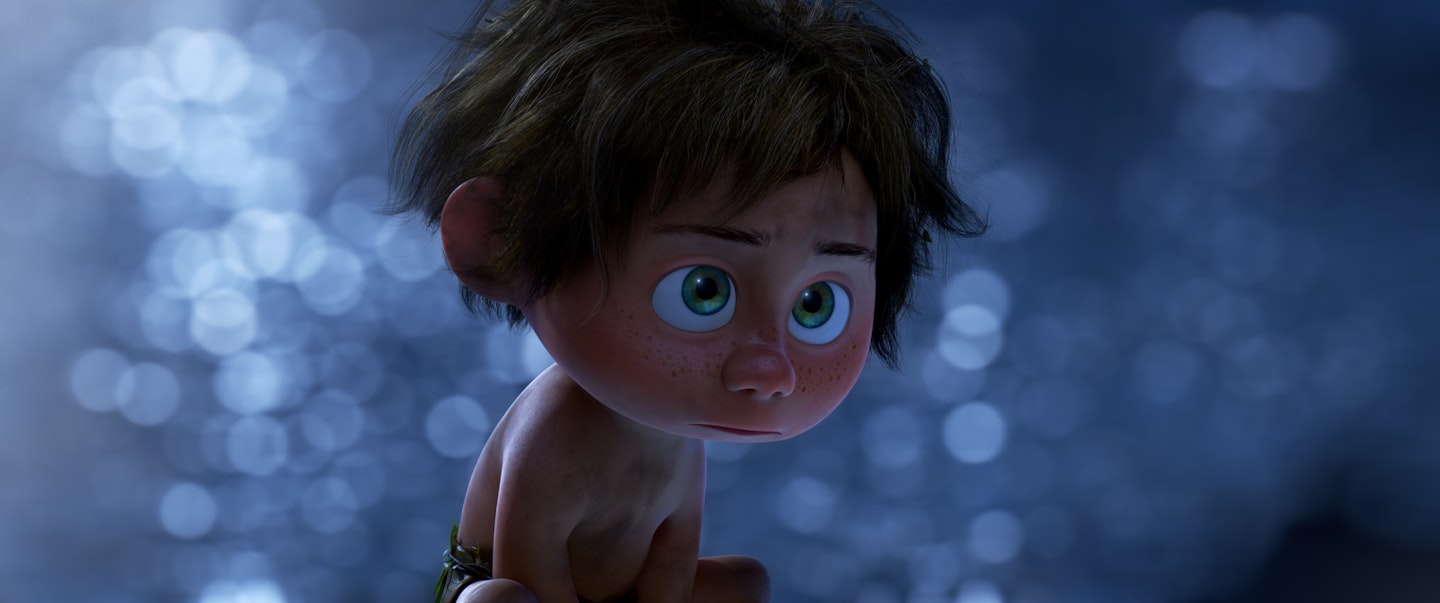
We worked hard on Spot. A lot of departments, from art to story, worked to find the beats that Spot would go through. We wanted to visually communicate that he was on his own, but also an animal. The animators experimented a lot to see how you could see him making animal decisions through his movement, and see him slowly start to uncover his humanity throughout the film.
Forest Woodbush, Pet Collector
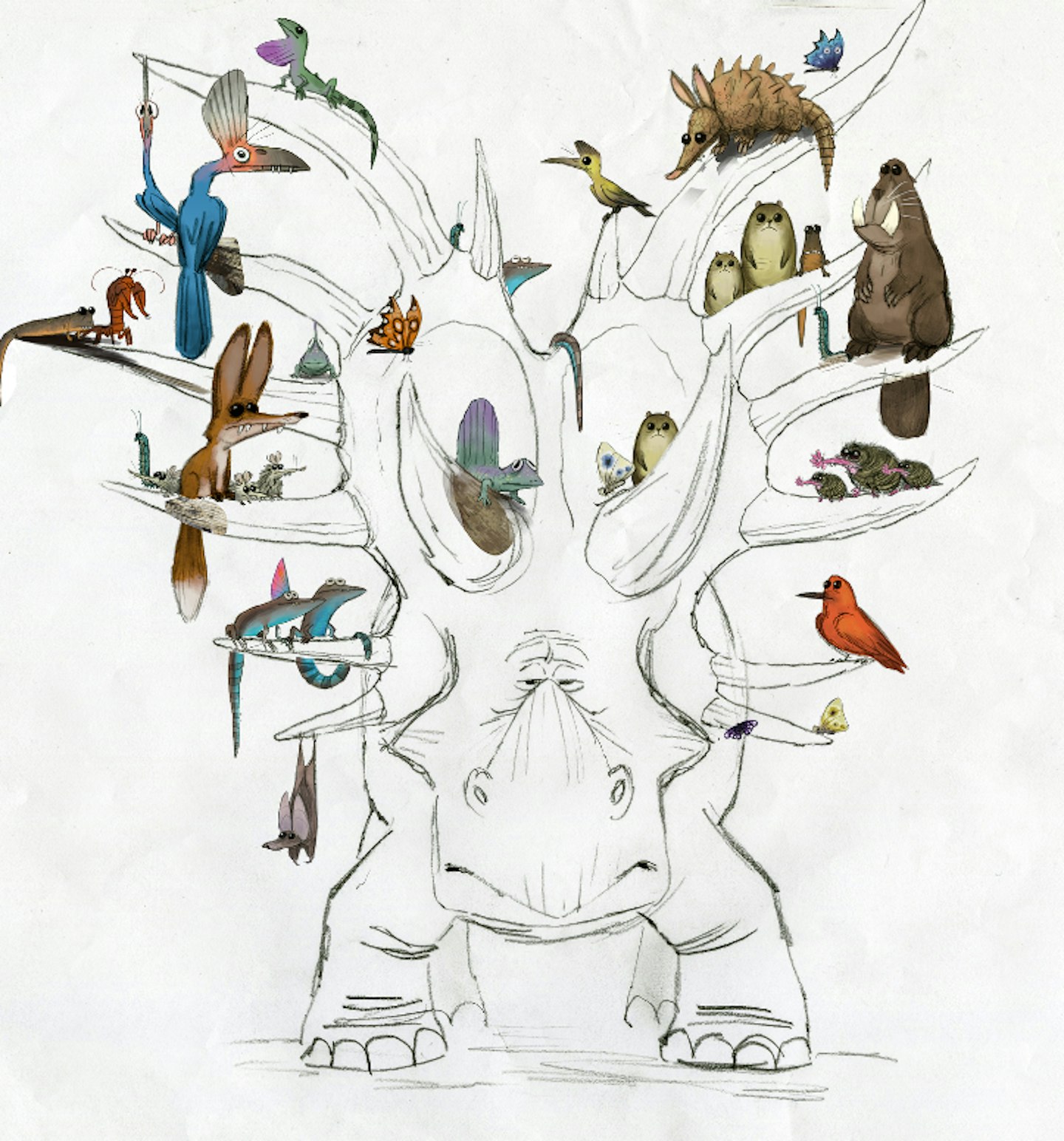
PS: This was an early drawing, showing how the horned crest of this Styracosaurus could be used like shelves to hold all of these talismans. He’s such an anxious character that he needs all of these other animals to protect him from the outside world. There were so many options with the animals. It was a production question as much as anything – could we make that many characters?
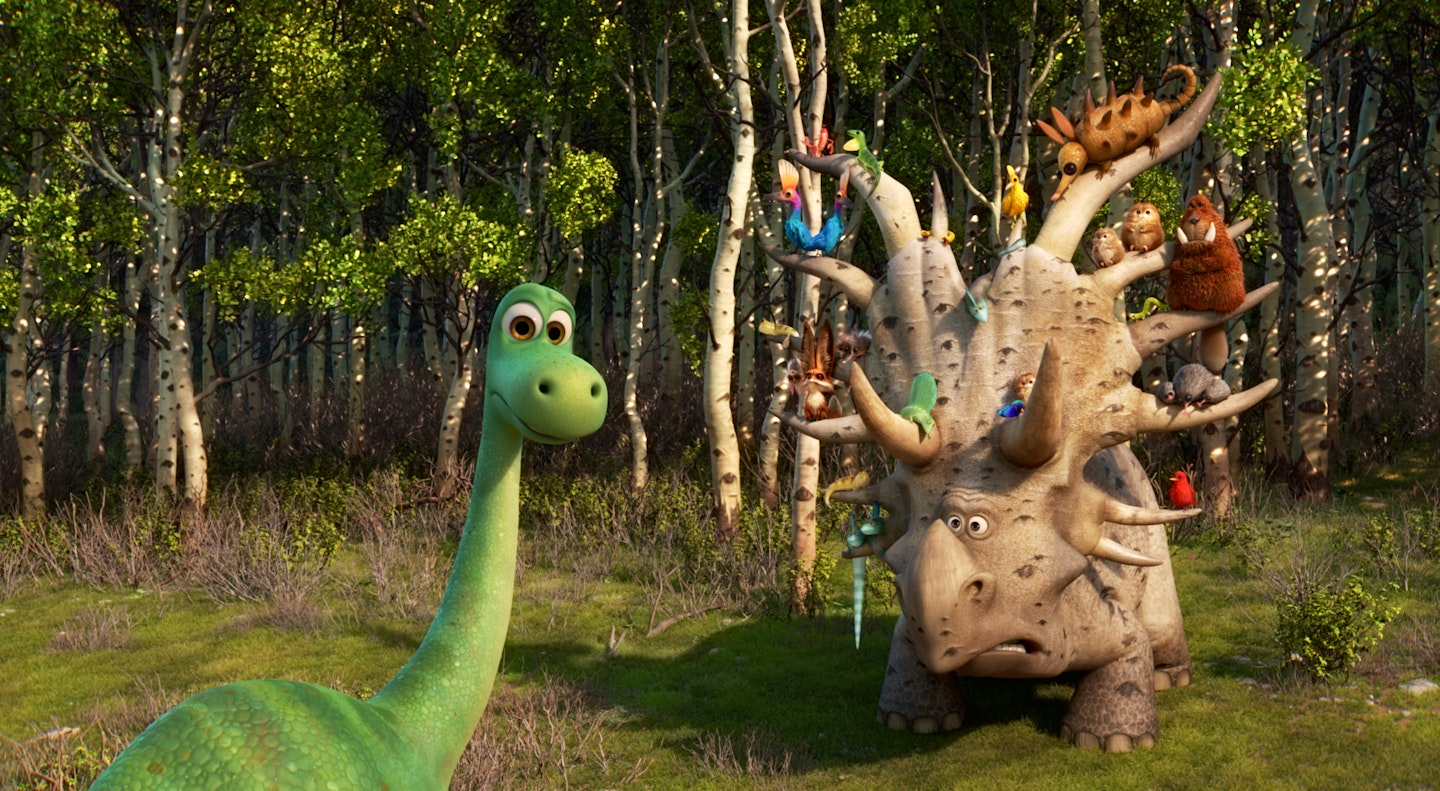
Denise Ream, Producer: Pete did the voice for Forest Woodbush, albeit reluctantly.
PS: I really didn’t want to, because I was busy directing. I thought we could find a proper actor. But John Lasseter loved my voice for some reason, and kept pushing me to do it. So I did.
The Clawtooth Mountains
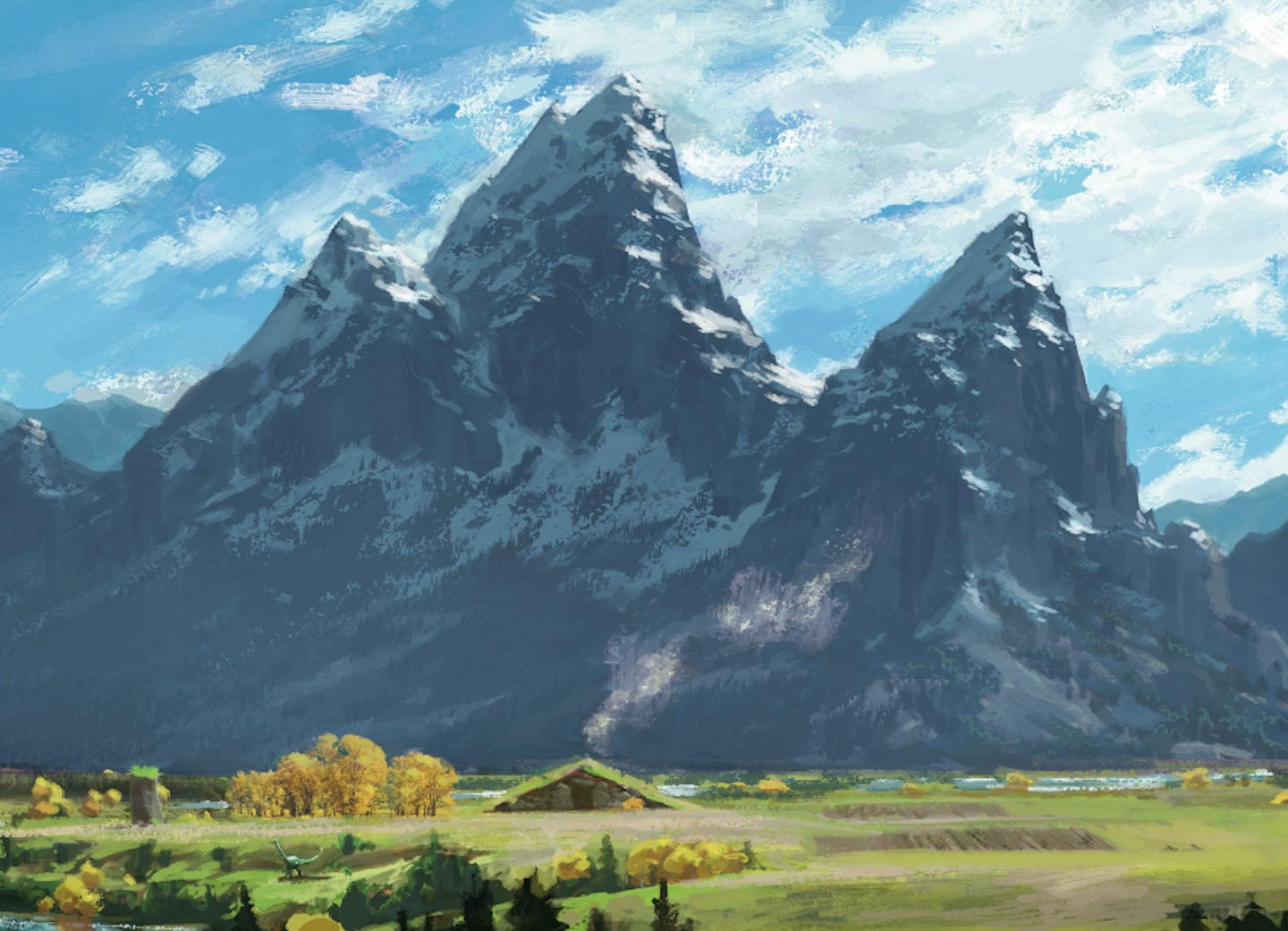
DR: Wyoming was the inspiration here. When the movie was reset, we switched from its original setting, and went on a huge research trip to Jackson Hole, Wyoming. We ended up going down the Snake River on a raft, right into the back of the Teton Range. It was a place we felt that a dinosaur could feel small and threatened by nature.
The Family T-Rex
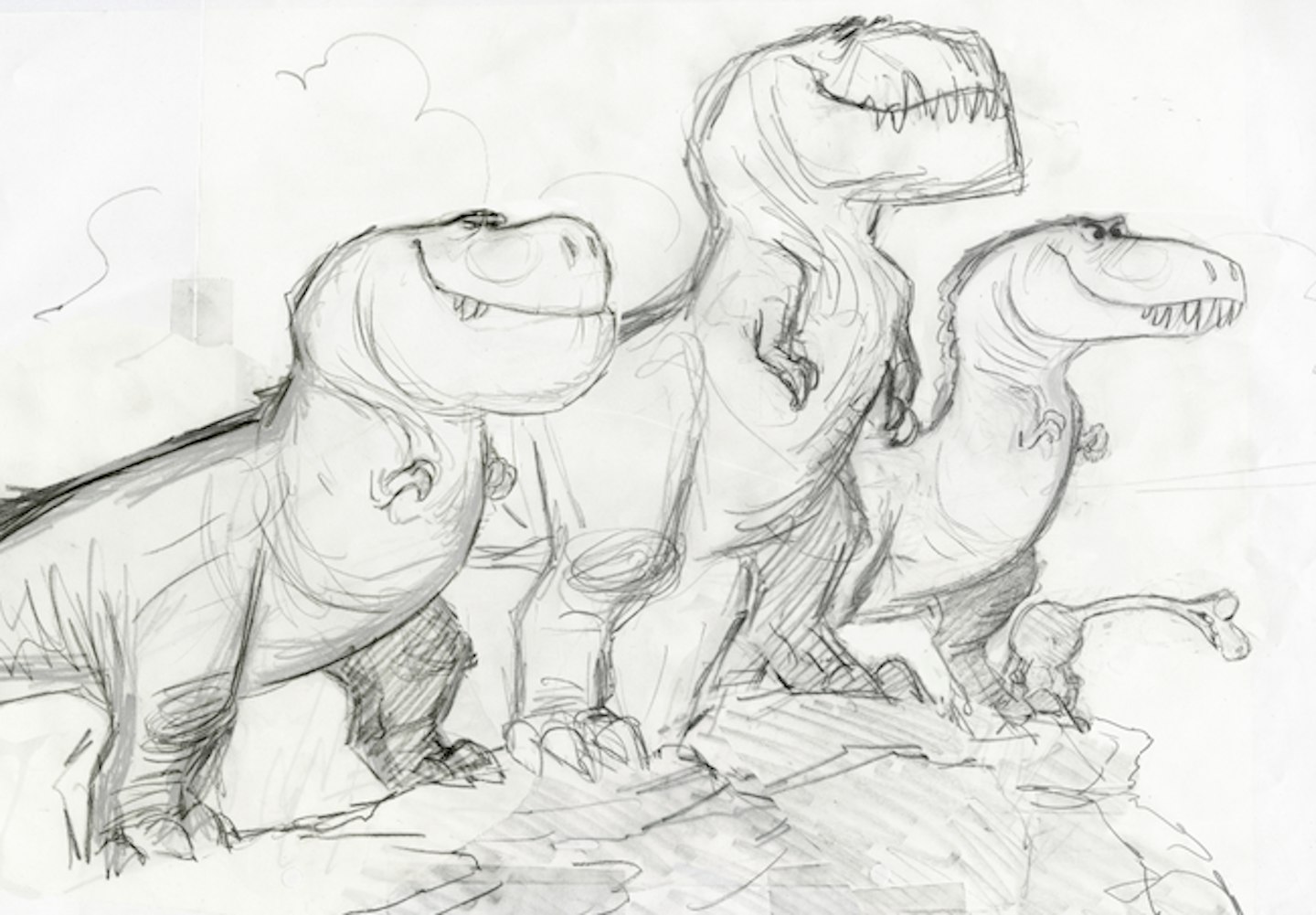
PS: The T-Rexs are essentially cowhands. The first time you meet them, you’re scared of them, but they turn into this positive force, this family. They weren’t a family at first, nor were they really what we now see on screen. When we first started working on it, they were kind of cowboy parodies. They were kind of a joke. But then we did a lot of research into some of these families living on ranches in Oregon. That made the change. We really wanted to honour that lifestyle of survival.
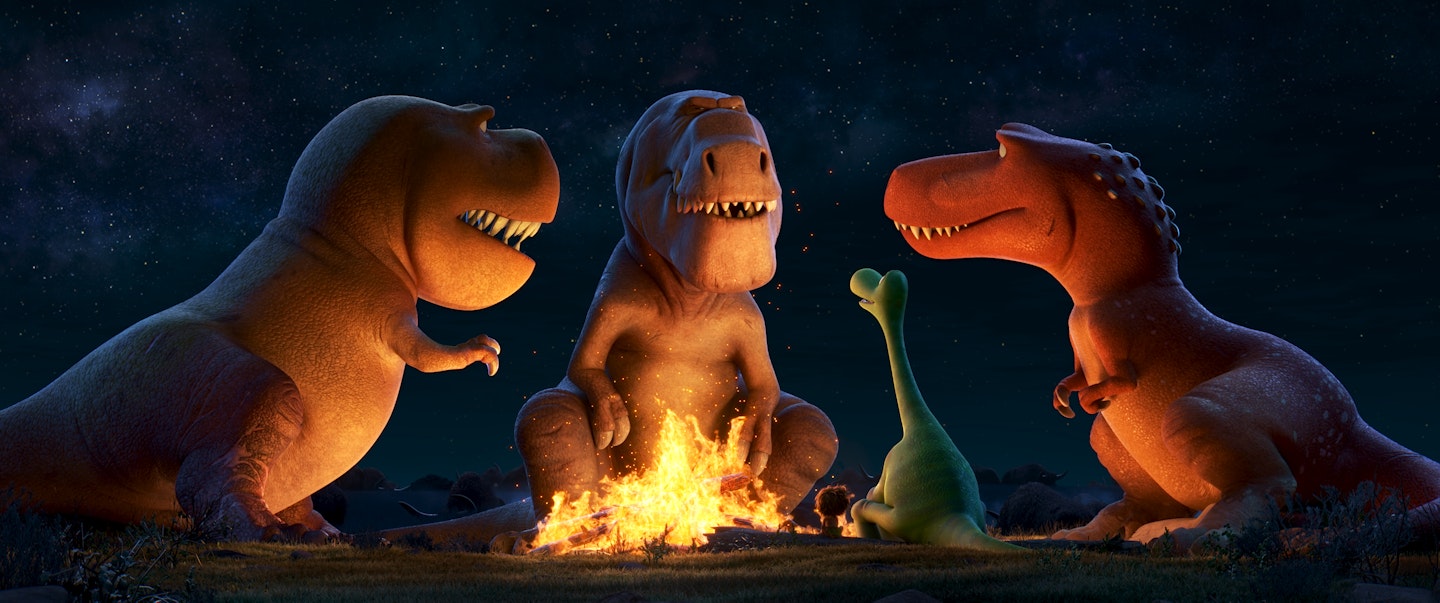
DR: We kept saying saying, “we need a Sam Elliott-type voice for this character”, and then I think John Lasseter just said, “well, why don’t you just get Sam Elliott?” And he very graciously said yes. He was wonderful. Such a pro. For his recording session, it was take one, every time. I don’t think we ever needed to record with him again. Believe me, that does not happen very often.
Moonlight Sonata
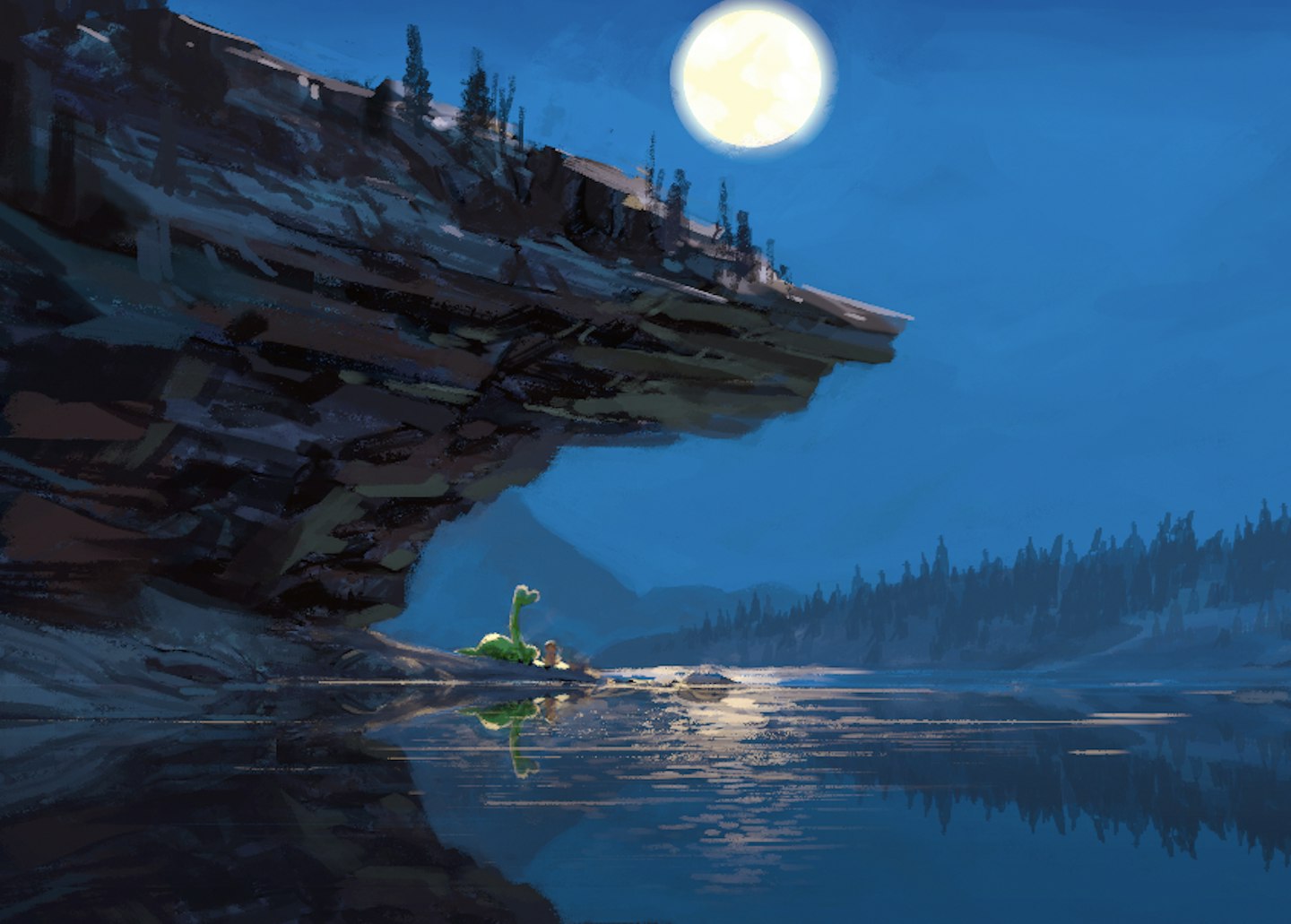
PS: This film is 99% all outdoors, save for a couple of moments in the beginning. So we were always looking for locations that would be memorable and emotional. There was something kind of cathedral-like about this rock formation, where you could have a moment of solitude in that way. The artist really tried to find ways to bring that emotion forward. This was an early concept of the setting, but as you can see, we retained a lot of it.
When nature calls
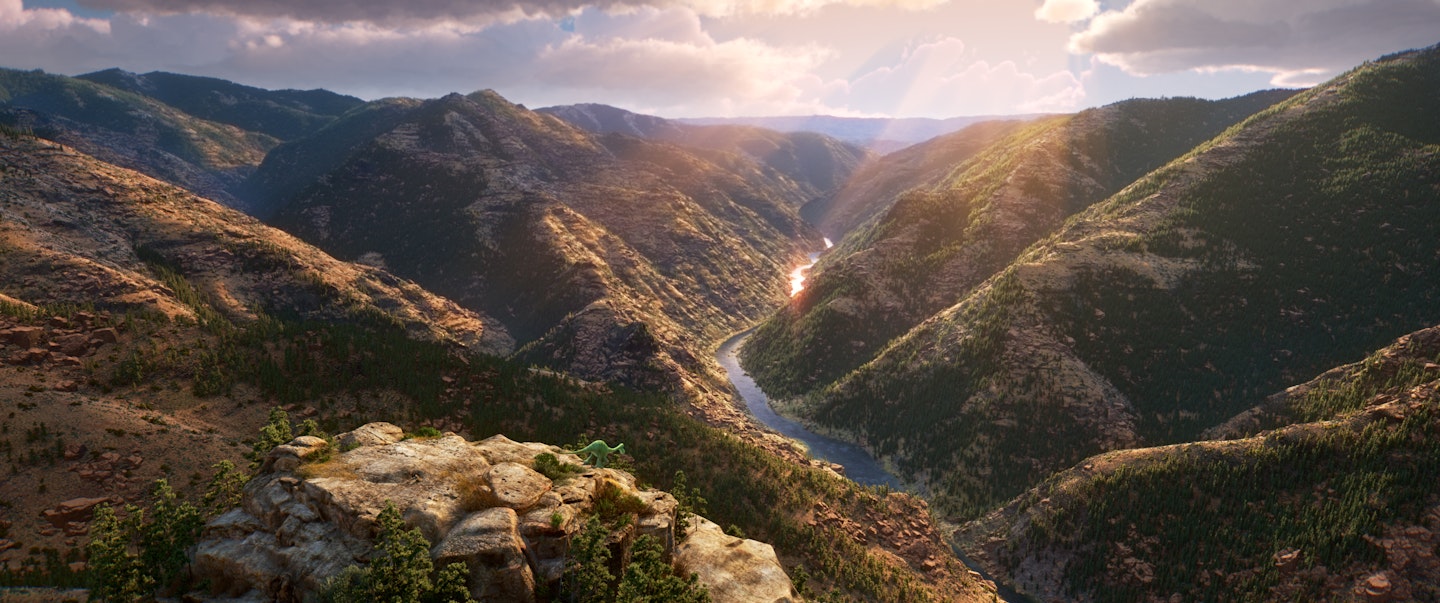
PS: We really wanted to make nature a character in this film, and be immersive and dangerous at the same time. If we went too graphic, too cartoonish, it would lose the threat of the world. Sharon Calahan, our Head of Photography, was a master of painting rivers and landscapes. She’s from that area, so she really had a clear understanding of how that would work. She found ways to make it emotional.
Water, water, everywhere
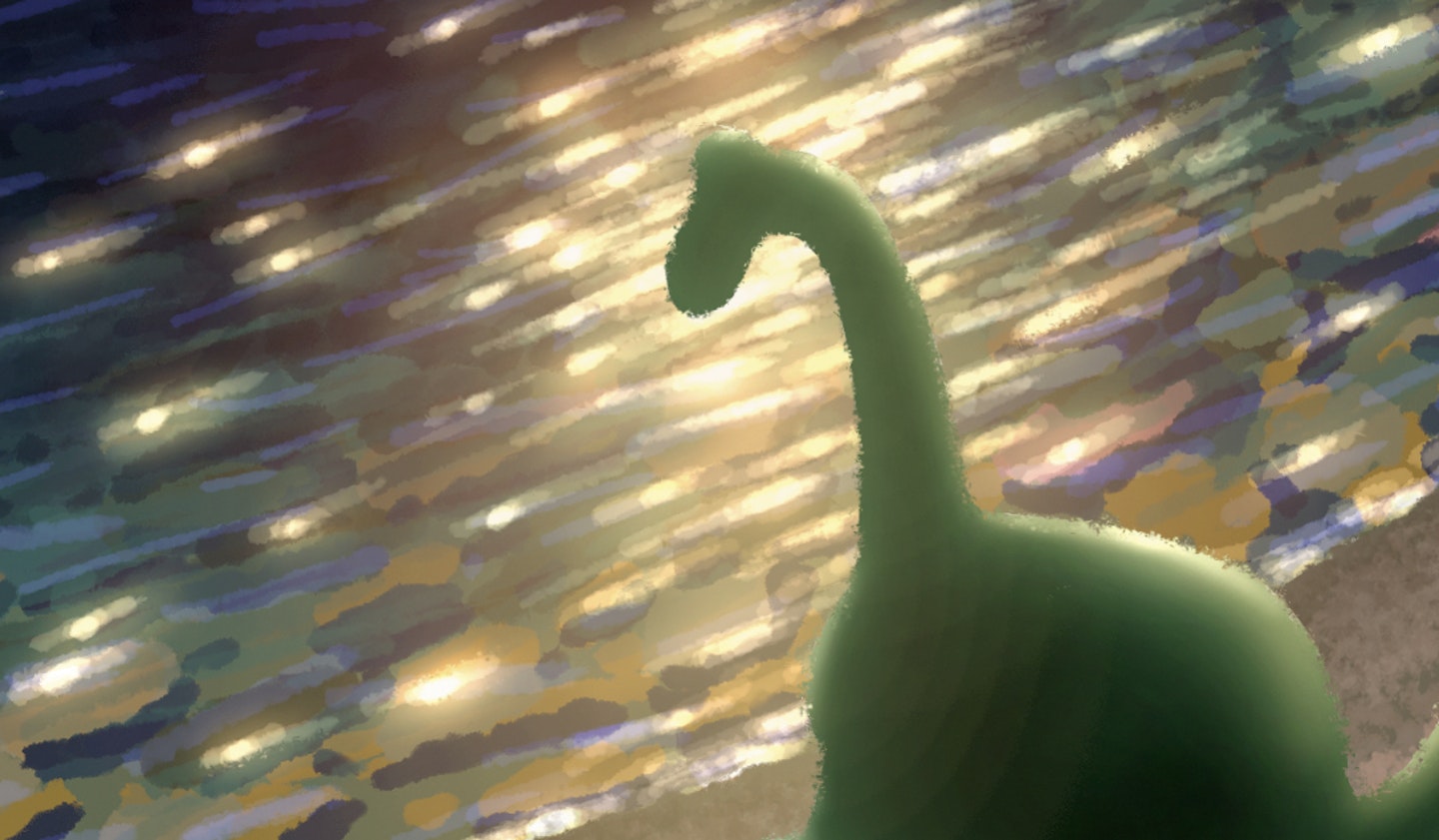
PS: Water’s very difficult to do. Technology-wise, it was all about figuring out a way that we could actually produce it. We found a way to make the river modular. It would be done in sections, almost like a waterslide. We wanted the river to kind of parallel Arlo’s journey, so when Arlo’s terrified and scared of the world, the river would be roiling and turbulent; when Arlo is connecting to nature and Spot, the river would be peaceful. We needed all these characteristics to it.
Spot and Arlo - the sequel?
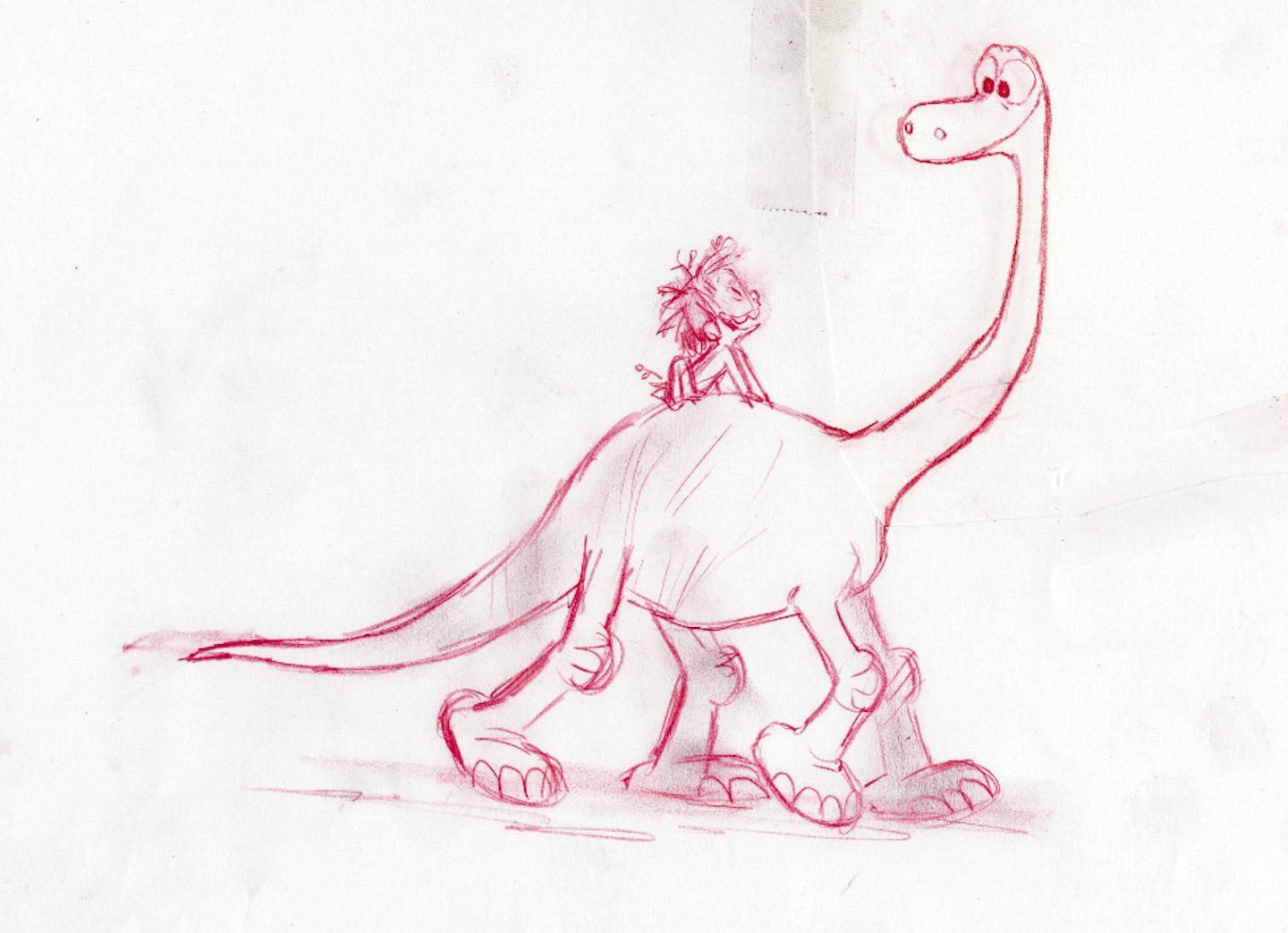
PS: Life, just like this movie, is so unpredictable. I have a dog, just like Spot, who is so unpredictable sometimes. Nature showed us so many times on our research trip how unpredictable it can be. At night, you’d see the Milky Way in the sky and just be awestruck, but then that same evening, you’d hear noises that would really freak you out... Maybe there’s a way in which the two could meet again – it depends on whether someone can come up with a good story.
The Good Dinosaur is in cinemas from November 27.
.jpg?ar=16%3A9&fit=crop&crop=top&auto=format&w=1440&q=80)